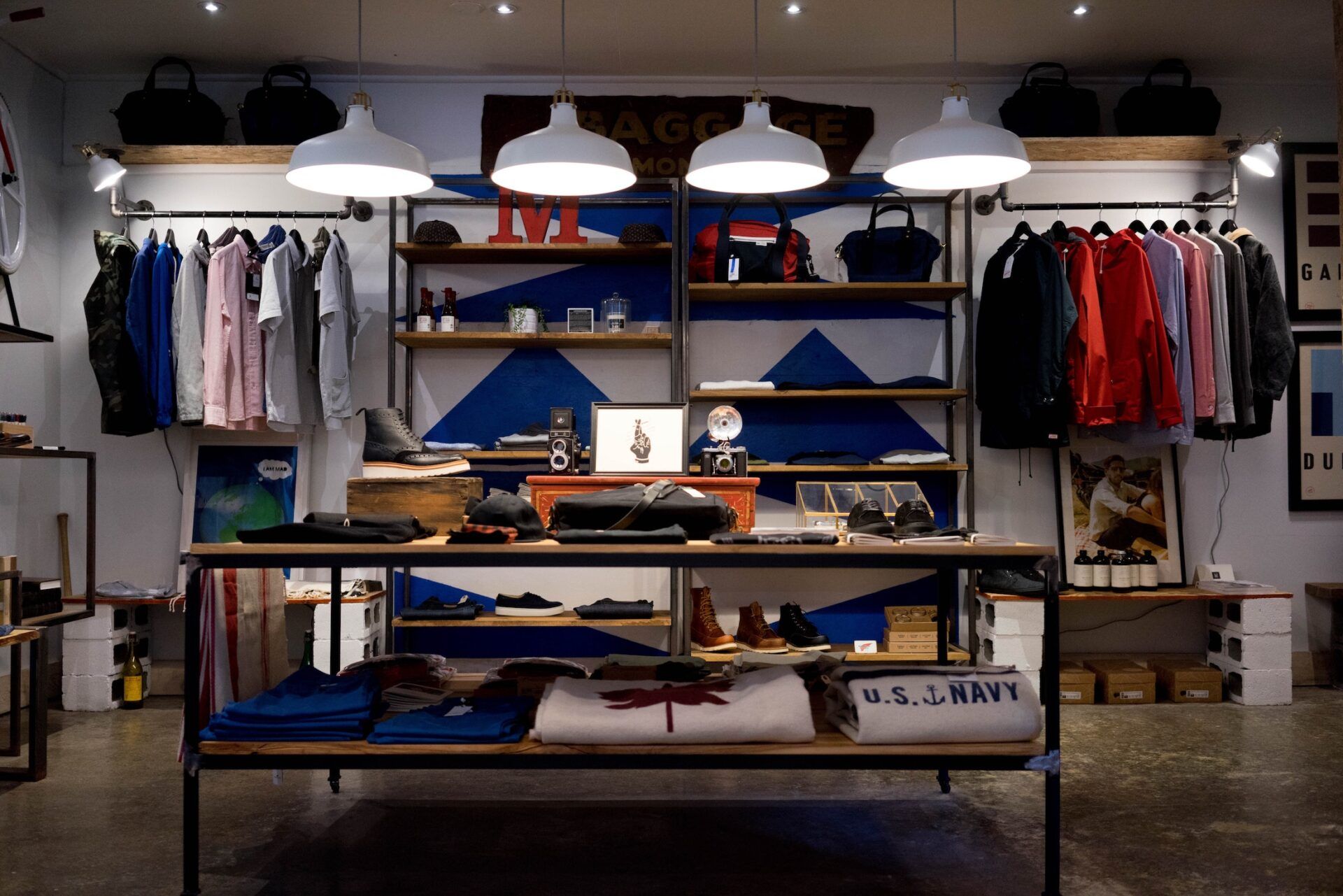November 25, 2025
The 2025 retail playbook—16 trends shaping the future of CX
In the time it takes you to read this sentence, hundreds of new online stores have opened. With endless options, how does a person decide where to spend their money? It’s not just about the product anymore, it’s about how a brand makes them feel.
Customer satisfaction and loyalty is more elusive than ever. Winning a new customer costs brands much more, with customer acquisition costs surging over 222% in the last decade, making retention the clear focus for retail and ecommerce. Customer experience in retail isn't just one of the important pillars anymore. It's the main way brands stand out.
Keeping customers happy has never been more important for a retailer than now. But here’s the challenge—if the experience is bad, nine out of ten shoppers will leave and not come back. Businesses lose billions of dollars each year because of poor customer service in retail. People want better service at a faster pace.
So, how do you create that standout experience without breaking the bank or losing the human touch? The solution isn’t more cost-cutting technology, it’s smarter cost-cutting technology. While AI in retail is a powerful tool, it has to be used carefully.
The retailers who succeed in 2025 will be the ones who find the perfect balance of using technology to make things easier, while relying on people to create special moments. Discover the nine key trends shaping customer experience in retail today and tomorrow.
Retail trends affecting your business right now
From how and where customers shop to how much they're willing to spend, many factors are impacting retail right now. Understanding these shifts is crucial for any business looking to connect with consumers and build lasting loyalty.
1. Shopping everywhere is the standard
Shoppers expect to move between your website, your app, and your physical store without missing a beat.
Omnichannel customers spend 1.5 times more each month compared to single-channel shoppers.
75% of shoppers use a mix of online and physical channels, with journeys often involving three or more touchpoints per purchase.
Retailers are investing in real-time inventory, unified customer profiles, and buy online/pickup in store (BOPIS) as these hybrid journeys become expected.
80% of transactions still happen in physical stores, even as digital grows.
2. Online shopping continues to soar
Ecommerce is set to grow all over the world. Having a strong, easy-to-use digital storefront is no longer optional.
Online and non-store sales are projected to increase 7–9% in 2025, reaching $1.5–1.6 trillion in the US alone.
Ecommerce sales globally are set to hit $6.56 trillion this year.
Nearly 17% of all US retail sales are now online, a significant rise from 16.1% in the previous year.
Popular online categories include groceries, clothing, and home goods.
3. Personal touches powered by AI
Retail leaders are planning to use AI to make shopping more personal. This isn't science fiction, it's about using technology to show customers you know them, which can increase the chance of a sale.
70% of retail executives plan to implement AI-powered personalization by the end of year.
Nearly 7 in 10 shoppers prefer retailers offering personalization across all channels.
Personalized shopping increases conversion rates by up to 15% for retailers using generative AI.
Data-driven loyalty programs, such as cash-back and exclusive offers, are rising in popularity.
4. Shoppers are watching every penny
With economic pressures, a majority of consumers are prioritizing price and value over brand names. Simple things like discounts, free shipping, and easy returns have a huge influence on where people decide to shop
60% of consumers are prioritizing price and value above brand loyalty due to economic pressures.
61% of online shoppers are influenced by discounts, free shipping, and easy returns.
Shoppers are increasingly using coupons, promotions, and digital tools to stretch budgets, especially during the holidays.
5. Gen Z’s love of private labels
The next generation of shoppers is all-in on private labels. Gen Z values the quality, packaging, and innovation of store brands from retailers like Target and Trader Joe's, proving it’s not just about the low price.
Gen Z is projected to allocate 18.4% of their spending budget to private labels by mid-2026, surpassing all other generations.
Gen Z values packaging, trust, authenticity, and innovation in store brands, not just low price.
Major retailers and big box stores have accelerated private label launches to meet this demand.
6. In-house resale and secondhand markets
The resale market is booming. Over 150 top fashion brands now run their own "re-commerce" platforms, giving clothes a second life and attracting customers who care about sustainability and value.
153 US fashion brands now run their own resale platforms, a 325% growth since 2021. Think of companies like Lululemon's Like New or Patagonia's Worn Wear.
74% of top brands without in-house resale are considering adding one to capture value-driven and eco-conscious shoppers.
Secondhand and circular business models extend to rental, repairs, and upcycling initiatives.
7. Hybrid and social commerce
The line between social media and shopping has blurred. People now discover and buy products through TikTok, Instagram Live, and other social channels. Nearly a quarter of shoppers check out products online before going to a store to buy them.
Phygital shopping or hybrid shopping, where a brand uses both digital and in-store experiences for the same purchase, is now the norm.
Social commerce, livestream shopping, and shoppable media especially engage younger audiences.
More than half of customers use digital devices to compare prices of items in nearby stores, with close to 23% using previews online before buying in-person.
Holiday shopping spans multiple channels, with shoppers buying gifts in-store, through mobiles, and computers.
8. The economy is changing priorities
Overall retail growth is expected to be steady but cautious. This means businesses are focused on being as efficient as possible while still delivering value. Innovation in pricing and sourcing is key.
Forecasts call for 2.7 – 3.7% growth overall in retail in the US in 2025.
Value and "cost to serve" drive competitive advantage as consumers become more deliberate with spending.
Inflation, tariffs, and supply-chain disruptions prompt innovation in pricing, promotions, and sourcing.
9. Physical stores are becoming destinations
To draw people in, stores are becoming hubs of experience. Think AR displays, classes, or cafes. More than half of consumers still want to see and touch products before buying, with many wanting personal service from a friendly, well-trained employee.
In-store innovation includes AR displays, QR code integrations, mobile checkout, and highly trained associates.
Retailers are updating and enhancing store layouts for fulfillment, customer engagement, and brand building.
More than half of consumers want to see and touch products before they purchase them.
32% of shoppers want personal service from retail staff during in-store visits, and 68% of them look for advice for more expensive purchases.
Customer experience resources to build long-term brand loyalty
Predictions for what's coming next for retail
There will always be some change in behavior, some new technology, or an economic shift on the horizon for retailers. Understanding these trends helps you prepare now so that you’re able to thrive through those changes later. See where today’s insights are guiding tomorrow, so you can learn where to invest your time and money to keep customers happy.
10. Hyper-personalization will lead to growth
Soon, AI will do more than just recommend products. It will anticipate what a shopper needs before they do, creating experiences that change in real-time for every single person.
Retailers will deploy micro strategies, offering real-time, generative-AI-powered individualization of recommendations, pricing, and service.
Predictive analytics will anticipate shopper needs, automate stocking, and deliver experiences that change dynamically per customer.
Loyalty programs will evolve to deliver flexible, cash-based rewards, exclusive access, and hyper-targeted offers.
11. Ecommerce will continue to gain popularity
The future isn't online or offline; it's a seamless blend. Expect to see more "buy online, pick up in store" options, smart lockers for easy pickup, and even faster delivery from your local store.
Ecommerce will continue to outpace physical store growth, but future innovation will blur boundaries—think seamless digital-to-store experiences, expanded BOPIS, curbside, smart lockers, and rapid delivery at scale.
Retailers will double down on building digital infrastructures like agile supply chains, automated inventory, and unified customer platforms.
Retail media networks, where retailers sell ad space leveraging their shopper data, are forecast to grow over 20% annually through 2027.
12. Private labels will capture more dollars
Retailers will continue to launch their own high-quality brands.
Retailers will continue launching in-house brands and expanding private labels across new categories (including fresh food, wellness, and home goods).
Perceptions of quality and innovation will be as critical as price for future private-label growth.
A recent study found that 80% of customers feel private-brand food is just as good as, or even better than, national brands.
13. Automation will extend to more in-store areas
More routine store tasks will become automated. This won't replace workers; it will free them up to do what they do best: help customers, offer advice, and create a welcoming environment.
Automated micro-fulfillment centers, in-house delivery fleets, and AI-driven last-mile logistics will accelerate.
Routine store functions will see increasing automation, freeing up associates for personalized customer interactions.
Autonomous store tech, including cashier-less checkout, will become more widespread in major markets.
15. Flexible business models will center new customer demand
Retailers will have to be nimble to survive economic shifts. This means offering customers more choices in how they get their products, like delivery or pickup, and how they pay, all while keeping costs down.
Retailers will compete on customer-centric cost efficiencies, providing multiple fulfillment and service options to balance margin with convenience.
Dynamic pricing, programmatic offers, and responsive supply chains will become crucial to survive economic headwinds and tariff impacts.
The rise of circular retail—resale, rental, and repair—will continue, as sustainability and cost pressures interact.
15. Your brand's story will matter more than ever
In a crowded market, experience is what makes you stand out. Brands that tell an authentic story and connect with customers on an emotional level—especially Gen Z and Millennials—will build the strongest loyalty.
Retailers will prioritize AR, VR, gamification, and emotional engagement as a way to attract and retain shoppers, both online and offline.
Purpose-driven branding and authentic storytelling will grow ever more important, particularly for Gen Z and younger Millennials.
Experiential retail—flagship stores, pop-ups, destination shopping—will drive brand affinity and social sharing.
16. “Shoppertainment” will drive more sales
Get ready for more livestream shopping events hosted by influencers. These events blend entertainment and commerce, creating a fun, interactive way to shop and build a community around a brand.
Retailers will invest in platforms where shopping, entertainment, and engagement converge (Instagram Shops, TikTok Lives, branded livestreams).
Seamless in-app shopping experiences will be standard, especially for fashion, beauty, and tech.
You don't have to choose between saving money and great service
In a tough economy, it’s natural to look for ways to cut costs. Too often, this means cutting back on the customer experience. But you don't have to choose one or the other. The key is to refuse to compromise. You can achieve significant operational efficiency and deliver exceptional customer experiences that drive long-term loyalty and growth.
Usually, this comes at the expense of customer experience. But data shows that brands using Gladly have not only seen cumulative cost savings of $510 million but a simultaneous increase–65% in CSAT scores. This isn't fiction again. It's the result of Gladly Customer AI being ahead of the curve.
Crate & Barrel alone generated $10M+ in revenue via chat payments because of our proactive, AI-assisted agents. By using our smart AI for your mundane tasks, each team is free to focus on the customer moments that truly matter. This approach doesn't just make customers happier; it makes business sense. Happy customers are loyal customers, and loyal customers drive revenue.
Learn more about Gladly Customer AI

Aashna Malpani
Content Marketing Strategist
Aashna Malpani is a content strategist and former multimedia journalist who believes the best marketing starts with understanding what makes people tick. At Gladly, she writes about how AI is reshaping customer experience. She brings a journalist's instinct for narrative and a focus on people-driven storytelling that cuts through the noise.
Frequently asked questions
Recommended reading

The 5 customer service AI trends shaping 2025 — industry leaders weigh in
Discover how leading brands are strategically implementing customer service AI to transform CX.
By
Angie Tran

Top 10 Digital Commerce Trends Shaping the Future of CX
A Future Commerce Report on the State of Retail
By
Aashna Malpani

5 Retail & Ecommerce Customer Experience Trends to Watch
Some brands set trends while others simply follow them.
By
Angie Tran